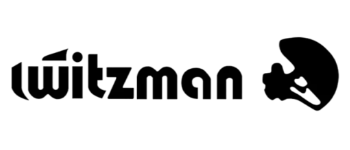Einführung
Anfang Januar 2025 erlebte Kalifornien eine seiner verheerendsten Waldbrandsaisonen, bei der große Flächen verwüstet wurden, insbesondere im Los Angeles County. Die Brände in Pacific Palisades und Eaton, die durch starke Santa-Ana-Winde und anhaltende Dürreperioden angefacht wurden, führten zu erheblichen Verlusten an Menschenleben und Eigentum. Diese Ereignisse unterstreichen die entscheidende Bedeutung des Verständnisses von Umweltsicherheit, insbesondere für Outdoor-Enthusiasten, die sich in die vielfältigen Landschaften Kaliforniens wagen.
Kapitel 1: Die Waldbrände in Kalifornien im Jahr 2025 – Eine Chronik der Verwüstung
1.1 Zeitlicher Ablauf
-
5. Januar 2025: Das Feuer in Pacific Palisades brach aus und breitete sich aufgrund der Trockenheit und starken Winde rasch aus.
-
6. Januar 2025: Das Eaton-Feuer brach in der Nähe von Altadena aus und belastete die Ressourcen der Feuerwehr noch mehr.
-
7. Januar 2025: Beide Brände weiteten sich aus, was in mehreren Stadtteilen zu obligatorischen Evakuierungen führte.
-
8. Januar 2025: Berichten zufolge gab es mindestens fünf Todesopfer und für über 130.000 Einwohner wurden Evakuierungsanordnungen erlassen.
 Ein Mann geht an einem vom Feuer verwüsteten Geschäft vorbei, nachdem das Eaton-Feuer am Mittwoch, den 8. Januar 2025, in Altadena, Kalifornien, gewütet war. (AP Photo/Ethan Swope)
Ein Mann geht an einem vom Feuer verwüsteten Geschäft vorbei, nachdem das Eaton-Feuer am Mittwoch, den 8. Januar 2025, in Altadena, Kalifornien, gewütet war. (AP Photo/Ethan Swope) -
9. Januar 2025: Die Eindämmungsbemühungen zeigten Fortschritte, doch die Brände hatten bereits Tausende Hektar Land verwüstet und zahlreiche Gebäude zerstört.
1.2 Auswirkungen auf die Gemeinschaft
Die Bewohner der betroffenen Gebiete mussten grauenhafte Erfahrungen machen, viele verloren ihr Zuhause und ihre Lebensgrundlage. Drohnenaufnahmen zeigten, dass die Viertel in Schutt und Asche gelegt waren und an Kriegsgebiete erinnerten. Die emotionale und psychische Belastung dieser Gemeinden ist enorm, viele äußerten Gefühle des Verlusts und der Ungewissheit über die Zukunft.
1.3 Umweltauswirkungen
Die Waldbrände haben nicht nur menschliche Lebensräume verwüstet, sondern auch erhebliche ökologische Schäden verursacht. Wälder, Wildtiere und natürliche Ressourcen wurden geschädigt, was zu langfristigen Umweltproblemen führte. Die Zerstörung der Vegetation erhöht das Risiko der Bodenerosion und stört lokale Ökosysteme, was möglicherweise zu weiteren Umweltschäden führt.
 Ein ausgebranntes Auto liegt am Mittwoch, den 8. Januar 2025, zwischen Trümmern im Stadtteil Altadena in Pasadena, Kalifornien. (AP Photo/Chris Pizzello)
Ein ausgebranntes Auto liegt am Mittwoch, den 8. Januar 2025, zwischen Trümmern im Stadtteil Altadena in Pasadena, Kalifornien. (AP Photo/Chris Pizzello)
Kapitel 2: Das Gebot der Umweltsicherheit bei Reisen in die Wildnis
2.1 Die Risiken verstehen
Wer in waldbrandgefährdeten Regionen Outdoor-Aktivitäten wie Camping und Wandern nachgeht, muss sich der Umweltrisiken bewusst sein. Faktoren wie Trockenheit, Windverhältnisse und menschliche Nachlässigkeit können schnell zu gefährlichen Situationen führen. Reisende müssen sich darüber im Klaren sein, dass ihre Anwesenheit und ihr Handeln erhebliche Auswirkungen auf die Umwelt und ihre Sicherheit haben können.
2.2 Die Rolle von Reisenden bei der Verhinderung von Waldbränden
Outdoor-Fans spielen eine entscheidende Rolle bei der Vorbeugung von Waldbränden. Die Einhaltung von Brandschutzvorschriften, wie z. B. das ordnungsgemäße Löschen von Lagerfeuern und die Vermeidung von offenem Feuer in Zeiten mit hohem Risiko, ist unerlässlich. Darüber hinaus können Sie versehentliche Brände verhindern, indem Sie sich über lokale Brandwarnungen und -beschränkungen informieren.
2.3 Rechtliche und ethische Verantwortung
Reisende müssen die örtlichen Vorschriften zum Schutz natürlicher Gebiete einhalten. Dazu gehört das Einholen der erforderlichen Genehmigungen, das Befolgen ausgewiesener Wanderwege und das Befolgen von Feuerverboten. Aus ethischer Sicht ist es unerlässlich, die Grundsätze von Leave No Trace zu befolgen, um die Umweltbelastung zu minimieren und die Wildnis für zukünftige Generationen zu bewahren.

Trump nutzt die Brände in Los Angeles, um seinen Streit mit Newsom wieder aufleben zu lassen
Kapitel 3: Grundlegende Sicherheitsmaßnahmen für das Campen in der Wildnis
3.1 Reiseplanung vor der Reise
-
Informieren Sie sich über das Gebiet: Informieren Sie sich über das Gelände, die Wetterverhältnisse und aktuelle Warnungen oder Einschränkungen. Wenden Sie sich an die örtlichen Behörden oder den Parkservice, um die neuesten Informationen zu erhalten.
-
Besorgen Sie sich die erforderlichen Genehmigungen: Stellen Sie sicher, dass Sie alle erforderlichen Genehmigungen eingeholt haben, und beachten Sie die spezifischen Regeln im Zusammenhang mit Camping und der Nutzung von Feuer.
-
Informieren Sie andere: Teilen Sie Ihre Reiseroute mit einer vertrauenswürdigen Person, einschließlich der voraussichtlichen Rückkehrzeiten und Notfallkontaktinformationen.
3.2 Sicherheit am Lagerfeuer
-
Wählen Sie sichere Orte: Verwenden Sie, wenn möglich, ausgewiesene Feuerstellen oder -gruben und stellen Sie sicher, dass sich in der Umgebung keine brennbaren Materialien befinden. Halten Sie mindestens 4,5 Meter Abstand zu Zelten und Ausrüstung.
-
Beobachten Sie die Wetterbedingungen: Vermeiden Sie es, bei Wind oder Trockenheit Feuer zu machen, da sich das Feuer sonst schnell ausbreiten kann.
-
Gründlich löschen: Löschen Sie Feuer mit Wasser, rühren Sie die Asche um und stellen Sie sicher, dass die Glut vollständig erloschen ist, bevor Sie den Ort verlassen oder schlafen gehen.
3.3 Bewusstsein für Wildtiere
-
Lagerung von Lebensmitteln: Lagern Sie Lebensmittel in bärensicheren Behältern oder hängen Sie sie hoch auf, um keine Wildtiere anzulocken.
-
Abstand halten: Beobachten Sie Tiere aus sicherer Entfernung und versuchen Sie niemals, sie zu füttern oder sich ihnen zu nähern.
-
Kennen Sie die Tierwelt: Machen Sie sich mit den einheimischen Arten vertraut und erfahren Sie, wie Sie bei möglichen Begegnungen angemessen reagieren können.
Kapitel 4: Sicherheitsvorkehrungen für Expeditionen in tiefe Wälder und dichten Dschungel
4.1 Navigationsfähigkeiten
-
Nehmen Sie zuverlässige Hilfsmittel mit: Statten Sie sich mit aktuellen Karten, einem Kompass und einem GPS-Gerät aus. Stellen Sie sicher, dass Sie diese Geräte gut bedienen können.
-
Markieren Sie Ihre Spur: Verwenden Sie biologisch abbaubare Markierungen oder GPS-Wegpunkte, um Ihren Weg zu verfolgen und zu verhindern, dass Sie sich verlaufen.
-
Bleiben Sie auf den befestigten Wegen: Verlassen Sie möglichst nicht die Wege, um die Gefahr der Orientierungslosigkeit und einer Beeinträchtigung der Umwelt zu minimieren.
4.2 Wettervorsorge
-
Prüfen Sie die Vorhersagen: Überprüfen Sie vor und während Ihrer Reise die Wettervorhersagen, um widrige Bedingungen vorherzusehen und sich darauf vorzubereiten.
-
Packen Sie geeignete Kleidung ein: Bringen Sie Schichten mit, die für unterschiedliche Temperaturen und Bedingungen geeignet sind, einschließlich Regenkleidung und Thermokleidung.
-
Überlegungen zum Unterschlupf: Stellen Sie sicher, dass Ihr Zelt und Ihre Schlafgelegenheiten für das erwartete Wetter geeignet sind und ausreichend Schutz und Isolierung bieten.
4.3 Notfallstrategien
-
Erste-Hilfe-Schulung: Erwerben Sie grundlegende Erste-Hilfe-Kenntnisse zur Behandlung möglicher Verletzungen oder gesundheitlicher Probleme.
-
Notfallkommunikation: Tragen Sie ein Satellitentelefon oder einen persönlichen Ortungssender (PLB) bei sich, um bei Bedarf um Hilfe zu signalisieren.
-
Entwickeln Sie einen Evakuierungsplan , der auch Informationen zu den nächstgelegenen Fluchtwegen, Sicherheitszonen und in der Gegend verfügbaren Notdiensten enthält.
- Informieren Sie sich über die Gefahren vor Ort: Seien Sie sich der potenziellen Gefahren bewusst, die in der Region bestehen, wie etwa giftige Pflanzen, giftige Tiere oder instabiles Gelände.
Kapitel 5: Packen für die Sicherheit in der Wildnis – Die Rolle eines Rucksacks mit großem Fassungsvermögen
5.1 Rucksackgröße und Organisation
-
Auswahl des richtigen Fassungsvermögens: Für längere Reisen ist ein Rucksack mit 50 Litern oder mehr ideal, da er ausreichend Platz für das Nötigste bietet, ohne die Mobilität einzuschränken.
-
Unterteilte Aufbewahrung: Wählen Sie einen Rucksack mit mehreren Fächern, um Gegenstände systematisch zu organisieren und leicht darauf zuzugreifen.
-
Gewichtsverteilung: Entscheiden Sie sich für einen Rucksack mit verstellbaren Riemen und einem gepolsterten Hüftgurt, um das Gewicht gleichmäßig zu verteilen und so die Belastung Ihres Rückens und Ihrer Schultern zu verringern.
5.2 Wichtige Elemente für Sicherheit und Komfort

-
Notfallset: Enthält ein Erste-Hilfe-Set, Feueranzünder, eine Pfeife und ein Multifunktionswerkzeug.
-
Navigationsausrüstung: Packen Sie Karten, einen Kompass, ein GPS-Gerät und zusätzliche Batterien oder ein Solarladegerät ein.
-
Unterschlupfausstattung: Nehmen Sie ein leichtes Zelt oder einen Biwaksack sowie eine Bodenplane und eine Rettungsdecke mit.
-
Essen und Trinken: Packen Sie kalorienreiche, haltbare Lebensmittel und ein Wasserfiltersystem oder Reinigungstabletten ein.
-
Kleidung: Tragen Sie dem Wetter entsprechende Kleidungsschichten, feuchtigkeitsableitende Basisschichten und festes Schuhwerk.
5.3 Zusätzliche Notfallausrüstung

Mini-Feuerlöscher
-
Kommunikationsgeräte: Bringen Sie ein Satellitentelefon oder einen Personal Locator Beacon (PLB) für Gebiete ohne Mobilfunkabdeckung mit.
-
Beleuchtungsausrüstung: Verwenden Sie Stirnlampen mit zusätzlichen Batterien, damit Sie die Hände frei haben.
-
Verteidigungswerkzeuge: Erwägen Sie je nach örtlichen Gesetzen das Mitführen von Pfefferspray oder einer Pfeife zu Ihrer persönlichen Sicherheit.
Kapitel 6: Die menschliche Verbindung – Interviews und Perspektiven
6.1 Einblicke von Überlebenden

-
Berichte von Anwohnern: Anwohner berichteten von ihren schrecklichen Erlebnissen während der Brände und betonten, wie wichtig eine bessere Vorbereitung und die Schaffung von Unterstützungsnetzwerken in der Gemeinde sei.
-
Erfahrungsberichte von Reisenden: Outdoor-Enthusiasten betonen, wie wichtig es ist, sich über die Umweltbedingungen zu informieren und einen gut durchdachten Sicherheitsplan zu haben.
6.2 Expertenmeinungen
-
Ratschläge der Feuerwehr: Experten betonten die entscheidende Rolle einer frühzeitigen Erkennung und Evakuierungsbereitschaft und forderten Reisende auf, Waldbrandwarnungen zu beachten.
-
Perspektiven von Umweltschützern: Befürworter nachhaltigen Reisens betonten, wie wichtig es sei, die menschlichen Auswirkungen auf brandgefährdete Gebiete zu reduzieren, beispielsweise durch die Vermeidung von Lagerfeuern und die Einhaltung der „Leave No Trace“-Prinzipien.
Kapitel 7: Gelernte Lektionen und der Weg in die Zukunft
7.1 Wichtige Erkenntnisse aus den Waldbränden in Kalifornien
-
Proaktive Maßnahmen retten Leben: Durch die richtige Planung und Einhaltung von Sicherheitsprotokollen können die Risiken für Reisende und Einheimische gleichermaßen erheblich reduziert werden.
-
Umweltbewusstsein ist entscheidend: Das Verständnis der Wechselwirkung zwischen menschlichem Handeln und Naturkatastrophen ist für nachhaltiges Reisen unabdingbar.
-
Gemeinschaftsanstrengungen sind wichtig: Gemeinsame Initiativen zwischen Reisenden, lokalen Behörden und Umweltorganisationen können die Sicherheit und die Naturschutzbemühungen verbessern.
7.2 Änderungen implementieren
-
Aufklärungskampagnen: Sensibilisieren Sie Reisende für Umweltsicherheit und Waldbrandprävention.
-
Verbesserte Infrastruktur: Investieren Sie in feuerfeste Unterstände, zugängliche Notvorräte und modernisierte Wegesysteme.
-
Nachhaltige Praktiken: Fördern Sie umweltfreundliche Reisegewohnheiten, wie etwa die Nutzung solarbetriebener Geräte und die Unterstützung von Naturschutzinitiativen.
Fazit: Verantwortungsbewusstes Reisen in einer sich verändernden Welt
Die verheerende Waldbrandsaison in Kalifornien ist eine eindringliche Erinnerung an die Fragilität unserer natürlichen Umwelt und die entscheidende Bedeutung verantwortungsbewussten Reiseverhaltens. Als Entdecker der Wildnis tragen wir die Verantwortung, die Landschaften zu schützen, die uns so am Herzen liegen. Indem wir die Risiken verstehen, uns sorgfältig vorbereiten und uns nachhaltige Gewohnheiten aneignen, können wir sicherstellen, dass unsere Abenteuer nicht nur unser Leben bereichern, sondern auch die Welt, in der wir leben, für kommende Generationen schützen.




Aktie:
Der ultimative Leitfaden zur Auswahl des perfekten Reiserucksacks
Verstehen, warum Menschen gerne reisen und wie sich dies auf unser geistiges und emotionales Wohlbefinden auswirkt